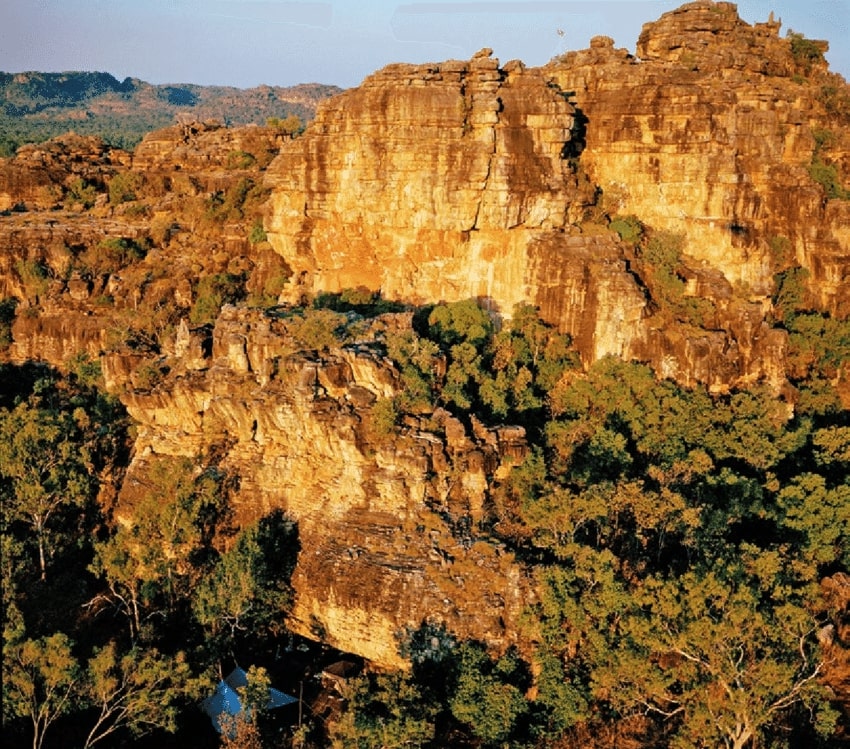Madjedbebe Rock Shelter, located in the Northern Territory of Australia, is one of the most significant archaeological sites in the world. The site has provided researchers with valuable insights into the lives of Aboriginal people who inhabited the area more than 65,000 years ago. This article will explore the history of the Madjedbebe Rock Shelter, the archaeological discoveries that have been made there, and what they reveal about the ancient history of Australia.
Table of contents
History of Madjedbebe Rock Shelter
Madjedbebe Rock Shelter, also known as Malakunanja II, is located in the Mirarr Country of the Kakadu National Park in the Northern Territory of Australia. The site is a rock shelter that was formed by the overhang of a sandstone cliff. The shelter is about 14 meters long and six meters wide and is situated at the base of a large sandstone escarpment. The shelter was first discovered in the 1970s by a team of archaeologists led by Rhys Jones, who found stone tools and other artifacts that indicated human occupation of the area.
Archaeological Discoveries at Madjedbebe Rock Shelter
Over the years, researchers have made many significant discoveries at Madjedbebe Rock Shelter. In 1989, archaeologist Chris Clarkson began excavating the site, and his team found evidence of continuous human occupation dating back over 65,000 years. Some of the most notable discoveries include:
- Stone tools: The site has yielded a vast collection of stone tools, including flakes, cores, and points made from a variety of materials such as quartz and chert. The tools suggest that the people who lived at Madjedbebe Rock Shelter were skilled hunters and gatherers who used a range of techniques to acquire food.
- Ochre: Ochre is a type of pigment that was used by ancient peoples for a variety of purposes, including body decoration and rock art. At Madjedbebe Rock Shelter, researchers have found evidence of ochre use dating back more than 65,000 years, making it the oldest known use of ochre in the world.
- Animal bones: The site has also yielded a significant number of animal bones, including those of large mammals such as kangaroos, wallabies, and possums. The bones provide evidence of the types of animals that were hunted and consumed by the people who lived at the site.
- Shellfish: In addition to hunting land animals, the people who lived at Madjedbebe Rock Shelter also collected shellfish. Researchers have found evidence of shellfish consumption dating back more than 60,000 years.
- Human remains: In 2015, archaeologists announced the discovery of the oldest human remains in Australia at Madjedbebe Rock Shelter. The remains, which included fragments of a human skull and a lower jaw, were dated to more than 65,000 years ago and provided new insights into the ancestry of modern Aboriginal Australians.
What the Discoveries Reveal about the Ancient History of Australia
The discoveries made at Madjedbebe Rock Shelter have provided researchers with valuable insights into the ancient history of Australia. Some of the key findings include:
- Early human migration: The evidence of continuous human occupation dating back over 65,000 years suggests that Australia was one of the earliest regions in which modern humans settled after leaving Africa.
- Sophisticated hunting and gathering: The stone tools and other artifacts found at the site indicate that the people who lived at Madjedbebe Rock Shelter were skilled hunters and gatherers who used a range of techniques to acquire food.
- Cultural practices: The use of ochre for body decoration and rock art suggests that the people who lived at the site had developed complex cultural practices.
- Environmental changes: The animal bones and other evidence found at Madjedbebe Rock Shelter suggest that the environment of the area has changed over time. For example, the discovery of shellfish consumption suggests that the area was once more conducive to marine life than it is today.
- Ancestry of modern Aboriginal Australians: The discovery of human remains at Madjedbebe Rock Shelter has provided new insights into the ancestry of modern Aboriginal Australians. The remains suggest that the ancestors of modern Aboriginal Australians arrived in Australia more than 65,000 years ago and have been living on the continent ever since.



 For all latest articles, follow on Google News
For all latest articles, follow on Google News